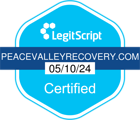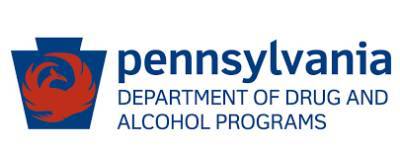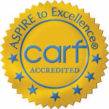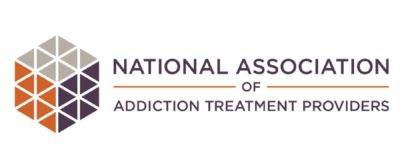Substance Abuse Prevention Month
![]() | Google Reviews
| Google Reviews
Peace Valley Recovery is located in Bucks County, Pennsylvania. Our mission is to provide patient-centered care that focuses on healing and recovery from addiction. This blog provides information, news, and uplifting content to help people in their recovery journey.
October marks National Substance Prevention Month, a month-long campaign dedicated to raising awareness about the impact of substance abuse. First recognized in 2011, it serves as a time to shine a light on the destruction caused by drugs and alcohol. It’s a time to highlight the need for substance abuse prevention, recognize those in recovery, and remember those who lost their lives to substance abuse.
Substance abuse is a growing problem throughout the United States. Millions of Americans suffer from the effects of substances, from alcohol to prescription medications to illicit drugs. Although studies showed a slight decline in substance use disorders between 2018 and 2019, the research from 2020 is alarming.
Rates of substance and alcohol abuse skyrocketed in 2020. 28.3 million people had alcohol use disorder (AUD) in 2020, almost doubling the 14.5 million people with AUD in 2019. 18.4 million people had illicit drug use disorder, up from 8.3 million people in 2019.
With research revealing such an alarming number of people struggling with substance abuse, there’s never been a greater need for more prevention and awareness. The impact of substance abuse expands far beyond the person abusing drugs or alcohol; it affects their parents, children, siblings, friends, colleagues, and more.
Where does the line between substance use and abuse lie? How widespread of a problem is drug and alcohol use? What role does Substance Abuse Prevention Month play and how can people find help? Continue reading to learn more about the impact of drugs and alcohol, what Substance Abuse Prevention Month can do, and where to seek help for substance abuse.
What is Substance Abuse?
Substance abuse refers to the consumption of mind-altering substances to the point that it causes negative outcomes. Most people who use substances recreationally never cross the line into substance abuse. They only drink or use occasionally and their casual use doesn’t get to a point that it affects their lives negatively.
On the other hand, some people use drugs or alcohol to the point that a substance use disorder develops. Substance use disorder (SUD) is a progressive condition meaning the longer a person drinks or uses drugs for, the worse their condition becomes. Individuals with SUD no longer drink or use only for social reasons; they use substances for their mind-altering effects.
Over time, these effects cause a change in brain function that impacts learning, decision making, judgment, memory, and behavior control. Substance abuse often leads to negative consequences but most people with SUD continue using despite any problems that arise.

The progression from casual use to abuse can be slow and subtle or fast and glaring. Different people have different experiences with their substance abuse but the results tend to be similar. Long-term abuse often results in long-term physical and psychological effects. Ultimately, if someone doesn’t receive the help they need to stop, substance abuse can be fatal.
Substance Abuse Statistics
Millions of people use alcohol or illicit drugs recreationally. Casual substance use is incredibly common among adolescents and adults in the United States. According to the National Survey on Drug Use and Health, 50% of people in the United States ages 12 and older (138.5 million people) drank alcohol in the last month. 21.4%, or 59.3 million people, used an illicit drug in the last year.
Again, not everyone who drinks alcohol or uses drugs progresses to substance abuse or develops substance use disorder. The majority of people never reach a place where their use is ongoing or negatively affects their lives. But others who enjoy the effects continue to drink and use past the casual point.
22.2% of the population, or more than 1 in 5 people, reported binge drinking in the last month. Binge drinking refers to a pattern of drinking that brings blood alcohol concentration (BAC) to the legal limit. This usually takes about 4 drinks for women or 5 drinks for men over the course of 2 hours.

Substance and alcohol use disorders are the most serious forms of substance abuse. 10.2% of people ages 12 and older meet the criteria for alcohol use disorder. 6.6% meet the criteria for a substance use disorder involving at least one illicit drug. These individuals experience a range of negative consequences that are a direct result of their drinking or substance use.
Does Your Loved One Struggle with Substance Abuse?
With such high rates of alcohol and drug abuse among people in the United States, chances are you know at least one person battling with alcohol or substance abuse. Are you concerned about a loved one who drinks or uses drugs? How do you know whether someone has developed an alcohol or drug problem? When should you be concerned about them?
Signs of substance or alcohol abuse are grouped into four main categories: impaired control, risky use, social problems, and drug effects. Examples of each include:

- Impaired control: inability to cut back or control substance use
- Risky use: substance use puts people in risky situations or causes dangerous effects
- Social problems: problems with friends or family or at work or school as a direct result of substance use
- Drug effects: needing to use more substances to achieve the desired effect or experiencing withdrawal symptoms when not using substances
Substance Abuse Prevention Month in Pennsylvania
Substance abuse is a serious problem not only for the United States as a whole but also in Pennsylvania. Drugs and alcohol have a detrimental impact on people throughout the state. Pennsylvania has also dealt extensively with the opioid epidemic plaguing the country. Substance abuse rates are at an all-time high in Pennsylvania and have held steady for the last few years.
According to Open Data Pennsylvania, an estimated 316,000 people lived with substance use disorder in Pennsylvania in 2019, about 2.8% of the population. In 2020, drug overdoses claimed the lives of 5,067 people, up from 4,458 in 2019. Opioids are responsible for an estimated 65% of these overdoses.
The need for Substance Abuse Prevention Month in Pennsylvania is clear. There’s an obvious substance abuse issue in the state and people need help. Thankfully the Pennsylvania government recognizes the severity of the problem and is dedicated to doing what it can to help its population.
Over the years, state representatives have been vocal in their support of Substance Abuse Prevention Month and the need for prevention at both the individual and community levels. Additionally, The Department of Drug and Alcohol Programs in Pennsylvania provides a wide range of prevention resources to promote recovery and help individuals in need.
Finding Freedom From Substance Abuse
Quitting substance may feel impossible but there is a way out of the darkness. Freedom from substance abuse is possible and available to anyone who wants to live in recovery from drug or alcohol use disorder. Addiction treatment programs are a primary option that provides a clear, direct path to escaping the cycle of drug and alcohol abuse.
Peace Valley Recovery is a drug and alcohol treatment program offering care for anyone trying to stop drinking or using drugs. We provide an individualized, caring approach to recovery that considers your needs and builds a treatment plan to meet them. Substance abuse doesn’t have to be the end of your story; Peace Valley Recovery is here to help.





